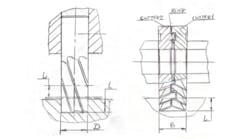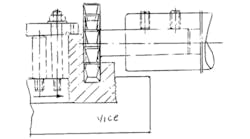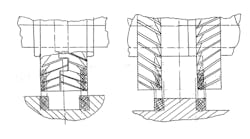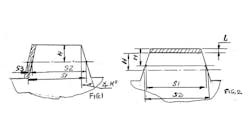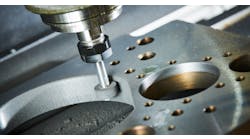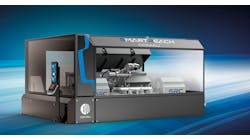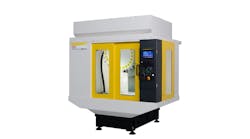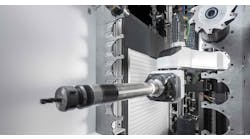Our frequent correspondent writes with some valuable notes on the technology involved in the process of machining slots:
“1. When you must machine a precision slot you sometimes need to use a precise diameter DXL cutting milling tool with some definable length of tool, 2 or 3 L, times the length of milling machining. (See Figure 1, above left.)
“Because of the wear of size diameter D on L we cannot use a wear part and we need to cut part D by L, grinding butt-end teeth and continuing to machine the slot with another rest part DXL. This provides a most economical advantage as we cut a wear part by a thin abrasive wheel.
“2. Where you machine precision slot, the best way to proceed is to machine by setting with a regulation ring, which give us the possibility of machining any precise slots. (See Figure 2, above right.)
“Set two disk milling cutters and regulation ring between them for grinding and compensation wear. After machining size slot BXL, we have wear on the precision side of the tool used for machining. Also, the size of tool has become smaller.
“When we make the ring larger than the wear we compensate for the wear and grind the part to the size that we need.
“3. When you machine two precision surfaces on the details of circular table and tilting and rotary table, and attend with them details, you can use precision turning instead of precision scraping. Once more, this provides a most economical advantage. And, for turning we use the special machine tool with diamond cutter, to achieve concavity of 2-3 micron on all surfaces. (See Figure 3, below.)
